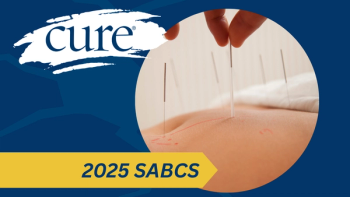
Survivorship Starts at Diagnosis: How Doctors Can Better Understand
“A person becomes a survivor from the point they are diagnosed and for the balance of their lives,” Dr. Don S. Dizon said in a presentation at the 37th Annual Miami Breast Cancer Conference®.
While the term “survivor” can vary for many patients with cancer, Dr. Don S. Dizon suggested that survivorship starts at diagnosis and health care professionals must be cognizant of this as they treat patients.
“A person becomes a survivor from the point they are diagnosed and for the balance of their lives,” Dizon said in a presentation at the 37th Annual Miami Breast Cancer Conference®. “Survivorship starts a diagnosis. (It) is actually a process and (oncologists) can actually categorize it for patients.”
He broke cancer survivorship into four categories: acute, transitional, extended and permanent survivorship.
In acute survivorship, surgical issues are important to patients, as well as other medical therapies like fertility preservation and endocrine therapy.
“It's that time to retell patients how we're going to approach their treatment…those issues are so important,” Dizon, who is the director of women’s cancers at the Lifespan Cancer Institute, director of medical oncology at Rhode Island Hospital and an associate professor of medicine at Alpert Medical School of Brown University, said.
As part of the “Go Flat” movement, women have gathered in online communities. With this, a Brown University student conducted a Facebook survey to find out how much patients knew about their surgical options following a breast cancer diagnosis, their interactions with breast specialists and overall experiences.
“First off, they wanted (surgeons) to tell them that going flat is an option, not a mistake, not something that they're going to change their mind about,” Dizon said. “They wanted to feel supported. They wanted pictures of what it is to go flat. They wanted this to be treated with the same seriousness as the reconstructive options themselves.”
Transitional survivorship is survivorship care planning. With this stage of survivorship also comes the fear of recurrence, which can be associated with younger age at diagnosis, having children, having limited support or a higher stage of disease. Dizon pointed out that fear of recurrence isn’t just something patients experience, but caregivers as well.
Extended survivorship includes a goal of three P’s to strengthen quality of life: preserve, prevent and prolong. “That is not only relevant to people without cancer, that is a relevant goal for your patients with advanced and metastatic disease,” Dizon said. Again, commonalities in the survivorship experience that do relate to people regardless of where they are in that disease trajectory.”
Permanent survivorship consists of patients who are 10 years out from diagnosis or living with a relapse or secondary cancer. With this, oncologists recommend physical activity for survivors: 360 minutes per week, which has been found to be inversely associated to cancer specific survival.
“We can make a difference in our patients lives. One can be cancer free, but not free from cancer,” Dizon concluded “Survivorship, at the end of the day, is about meeting patients where they are. The treatment goals we may have for our patients will differ from where our patients are in that journey.”





